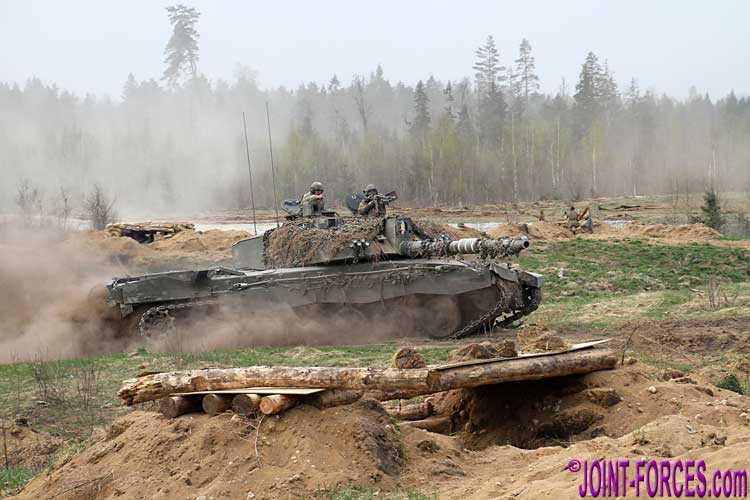
In response to the 2014 Russian annexation of Ukraine’s Crimean Peninsula, NATO strengthened its military presence in the Baltic States and Poland, writes Bob Morrison.
~
In March 2014 the Russian Federation shocked the West by annexing sovereign Ukrainian territory on the Crimean Peninsula after its troops had speedily occupied key installations. Later, more similarly equipped anonymous masked and uniformed soldiers played a major role assisting Russian-backed separatists in the Donbass region of Eastern Ukraine.
NATO responded to this Russian expansionism at the Wales Summit in September 2014, where a Joint Statement was issued by the NATO-Ukraine Commission confirming “support of Ukraine’s sovereignty and territorial integrity within its internationally recognised borders” and strongly condemning “Russia’s illegal and illegitimate self-declared ‘annexation’ of Crimea and its continued and deliberate destabilisation of eastern Ukraine in violation of international law”. Russian leaders paid scant regard to the Alliance concerns and at the NATO Warsaw Summit in July 2016 it was formally announced that the NATO military presence in the east would be strengthened by the stationing of four multinational battalions in the Baltic States of Estonia, Latvia and Lithuania plus neighbouring Poland.

The UK agreed to play a major part in this NATO enhanced Forward Presence (eFP) mission by not only providing the lead for the Estonian battle group (BG EST) but also supplying a reconnaissance component for the US-led Polish battle group (BG POL) to form an additional Troop for the US 2nd Cavalry Regiment. From the spring of 2017 under Operation CABRIT the initial, roughly 800-strong, lead component of BG EST was formed around 5th Battalion of The Rifles who were supported by a Troop of Challenger 2 main battle tanks from the Queen’s Royal Hussars plus artillery, engineer and logistics assets.
In mid-May 2017 I was able to watch and photograph A Company of 5 RIFLES undertaking an assault on prepared positions during the Light Units Battle Phase IIIA of the major multinational Exercise KEVADTORM (SPRING STORM) 2017 in Estonia. Prior to this I was also able to photograph British troops out in the field working alongside French troops serving with BG EST, and during the final Heavy Units Battle Phase IIIB I was able to observe a combined British and French attack on German and Estonian OpFor positions. In this first of three features I focus on A Company during Phase IIIA and next I plan turn my attention to the full eFP battle group on Phase IIIB. Carl Schulze will then update the story with images captured in 2018.
Following a 2003 Defence White Paper which recommended a 10% reduction in the number of infantry battalions, as a result of a minor downsizing of the British Army in general and the Infantry in particular in response to drawdown in Northern Ireland and the ending of Op BANNER, The Rifles was formed in 2007. In broad terms: 1st Battalion, The Rifles (1 RIFLES) was formed by an amalgamation of 1st Battalion, Devonshire & Dorset Light Infantry and 1st Battalion, Royal Gloucestershire, Berkshire & Wiltshire Light Infantry; 2 RIFLES was formed by re-designating 1st Battalion, Royal Green Jackets; 3 RIFLES was formed by re-designating 2nd Battalion,The Light Infantry; 4 RIFLES was formed by re-designating 2nd Battalion, Royal Green Jackets; and 5 RIFLES was formed by re-designating 1st Battalion, The Light Infantry. Two Territorial Army, now Army Reserve, battalions were created in 2007 as 6 RIFLES and 7 RIFLES and creation of a third Army Reserve battalion (8 RIFLES) was announced in December 2016.
At the time of their initial deployment to Estonia, 5 RIFLES operated in the Armoured Infantry role as part of the Reaction Force, serving as part of 20th Armoured Infantry Brigade within 3rd [UK] Division. The approximately 600-strong battalion used the FV510 Warrior ISV (Infantry Section Vehicle) as its primary form of transportation and its personnel were used to working closely with Challenger 2 Main Battle Tanks and Royal Engineers as part of an armoured battle group. In the early summer of 2017 two of the battalion’s three Rifle Companies were deployed on Op CABRIT in Estonia alongside a third, mechanised infantry, company from France’s 2e Régiment d’Infanterie de Marine (2e RIMa) who used the 8×8 VBCI.
These images in the album were mostly shot on the morning of 20th May on the Estonian MoD Central Training Area near Tapa. As part of the work-up training for the finale of KEVADTORM ’17, A Company from 5 RIFLES, operating as a Company Group with a Troop of four Challenger 2 tanks from the Queen’s Royal Hussars in support, broke in onto an enemy-held trench position defended in platoon (minus) strength. The RIFLES broke in from the south of my position and undertook sequential platoon assaults onto the trench complex, clearing through with the tanks providing fire support and in-depth support.
[ images © Bob Morrison ]
From top left to bottom right:-
- A Challenger 2 crosses in front of the main enemy position using its coaxial gun to suppress
- Behind this MBT an infantry platoon in three Warriors closes in at speed on the trenches
- The riflemen were equipped with the then new VIRTUS load carriage equipment and Revision Batlskin Cobra+ helmet
- Supported by Warriors the Riflemen clear the trenches – the Spartan carried an anti-armour team
- The trench systems on the Estonian training area were well prepared and proved challenging to attack
- Having cleared the enemy position to our front three four-man fire teams return to their Warriors
- A QRH Challenger 2 moves forward at speed to take up position to block any enemy counter-attack
- A platoon of Riflemen in their Warriors follow the tanks to new defensive positions
Continued…
- Battle Group Estonia 2017 ~ Pt.1
- Battle Group Estonia 2017 ~ Pt.2
- Battle Group Estonia 2017 ~ Pt.3
- Battle Group Estonia 2018 ~ Danes Join Brits







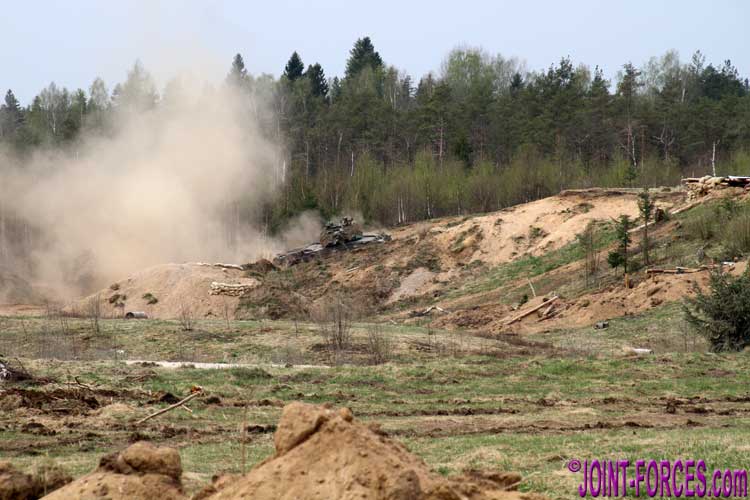
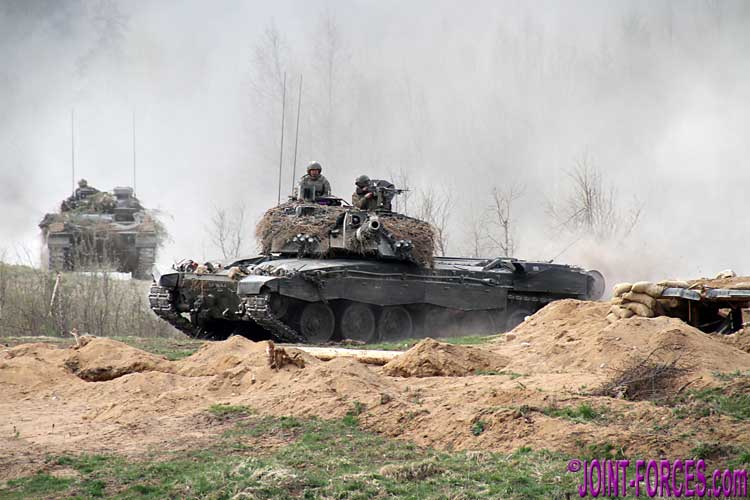
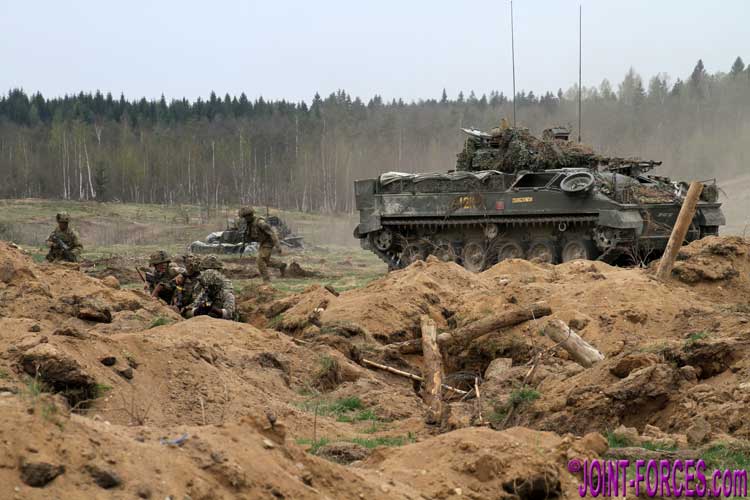
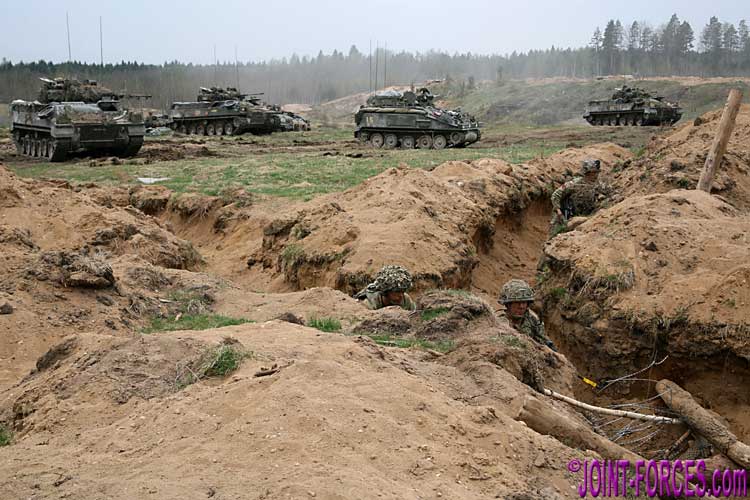
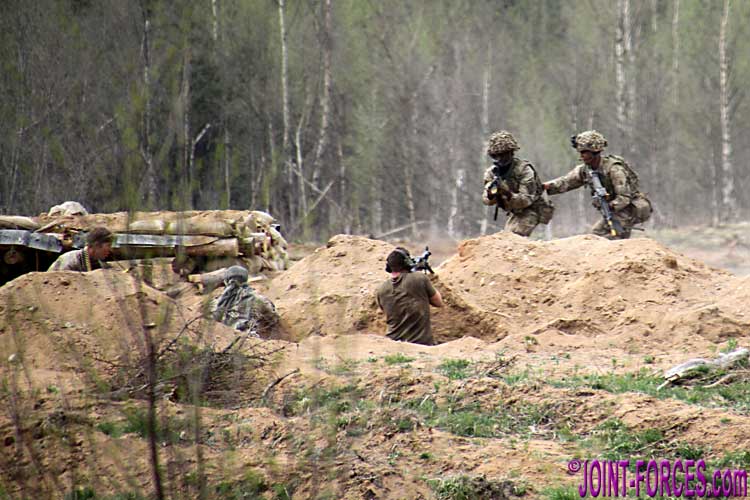
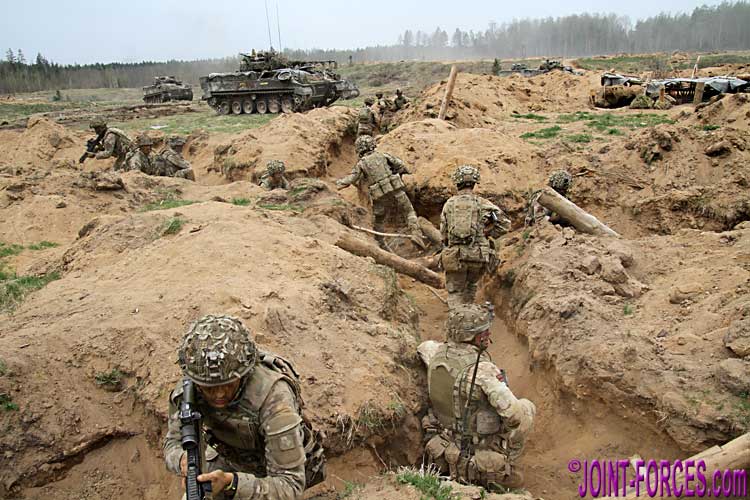
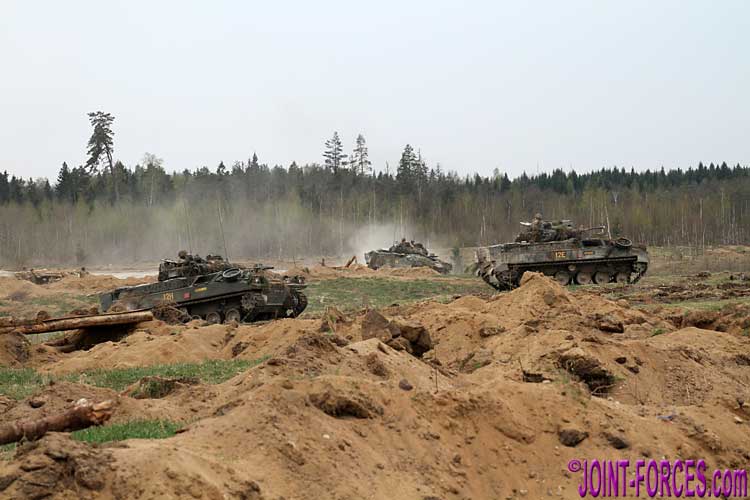


















Pingback : Battle Group Estonia 2018 ~ Danes Join Brits - Joint Forces News
Pingback : Battle Group Estonia 2017 ~ Pt.2 | Joint Forces News
Pingback : Battle Group Estonia 2017 ~ Pt.3 | Joint Forces News
Pingback : Op CABRIT and LYNX 9 In Estonia ~ Update | Joint Forces News